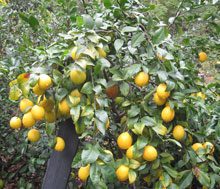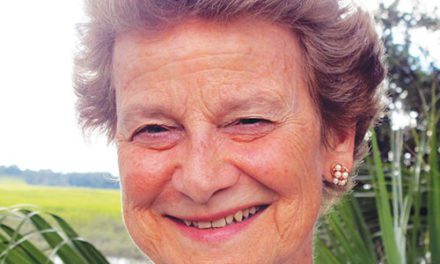So, you want to have a beautiful garden in the Lowcountry? Here are some tips from someone who has tried most of the plants available in the nursery trade for the last umpteen years. My best advice came from my mother –in- law who was an accomplished farmer, and landscaper. She said, “Honey you don’t need to do too much here; you already have gorgeous trees, yaupon, beauty berry; we’ll sprig some grass, and I’ll bring some azaleas from my yard.
My grandparents had also grown camellias and had a well-manicured property, but that was not going to be my style.
Let’s consider the climate. It’s too cool for some things and not cold enough for others, but for many subtropical plants it’s just right. Camellias are just about fool proof. There are so many different forms, colors, and bloom times that a collection of a few can give interest through the fall, winter, and spring. They are very available, and should be planted in well- drained soil, rich in organic matter. Given the right location and space they are easy enough for even the laziest gardeners. Pest problems show up when they are planted too close to buildings or each other, sheared, or planted too deeply.
Soil in the Lowcountry can certainly leave a lot to be desired. Calling it soil may even be a euphemism. Sandy soil, clay soil or muck can all be improved by the addition of compost. Whether you buy it in bulk or in bags, make your own or recycle grass clippings and leaves, compost and the addition of organic matter is a gardener’s friend. Organic matter helps to retain nutrients and moisture in sandy soil. It adds bulk and air space to clay soil. Plant roots need air, moisture, and nutrients to grow and penetrate the soil.
Another tip is to grow native plants. We have some great shrubs, perennials, grasses, and vines that not only give beauty and color to the landscapes they provide habitat and food for wildlife. Even a cutting garden or herb garden is an excellent way to attract pollinators and birds.
Native trees and shrubs are the bones of the Lowcountry garden, and it is important to preserve them on a property whenever possible because of the ecological services that they provide. Plants from other continents did not evolve with our native insects and are not eaten which may seem like a good thing. Many insects and especially caterpillars have specific host plants and cannot survive without them. This adversely affects the food chain and animals that eat them. Songbirds feed their babies mostly caterpillars and other soft bodied insects. Some important species to grow are oaks, willows, and native hollies.
Native azaleas are spectacular, grown for their color and fragrance, and recently they have become more available to the garden centers.
Perennials can be evergreen or die back in the winter. Some of the easiest to grow are blanket flower Gaillardia, sunflower Helianthus, yarrow Achillea, coneflower Rudbeckia, and goldenrod Solidago.
Ornamental Grasses and groundcovers can fill in the blanks. These are excellent lawn substitutes. There has been a lot of interest in low maintenance and drought tolerant plants. Many native grass species are available with names like ‘Heavy Metal’, Elliott’s Love Grass, Muhly grass, ‘Shenandoah’ or ‘Pete’s Smoke’. They can be used to make a statement or as fillers between other perennial groundcovers. For shade ferns are great fillers and pair well with colorful annuals or caladiums. For sunnier meadows or beds many of the spreading culinary herbs like thyme, oregano, or mint can be used to attract pollinators. Annual herbs: dill, basil, or cilantro are fun in arrangements, are tasty to us and may provide pollen and nectar as well.
Gardening in the Lowcountry may have its challenges, but the rewards are great.









